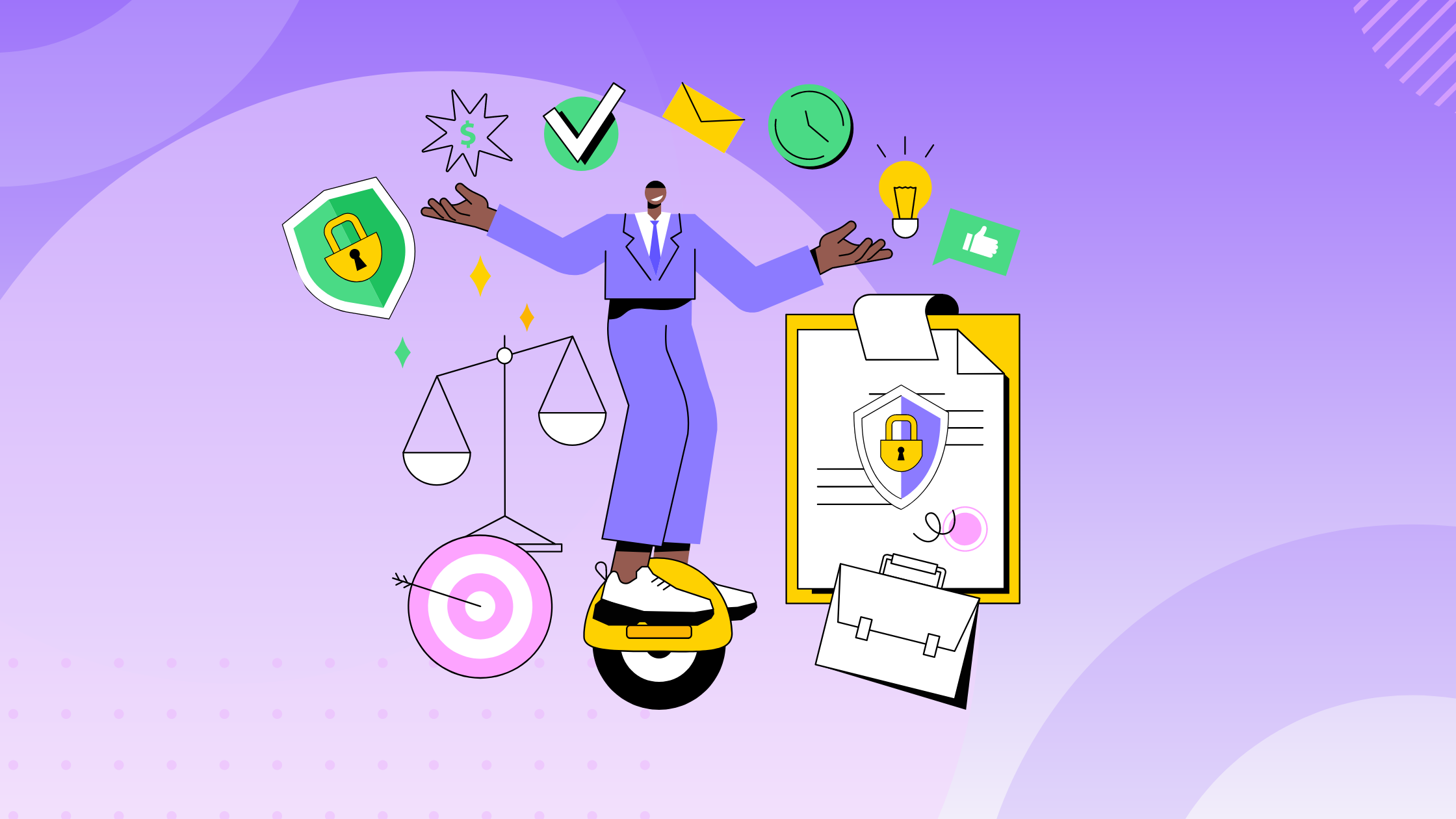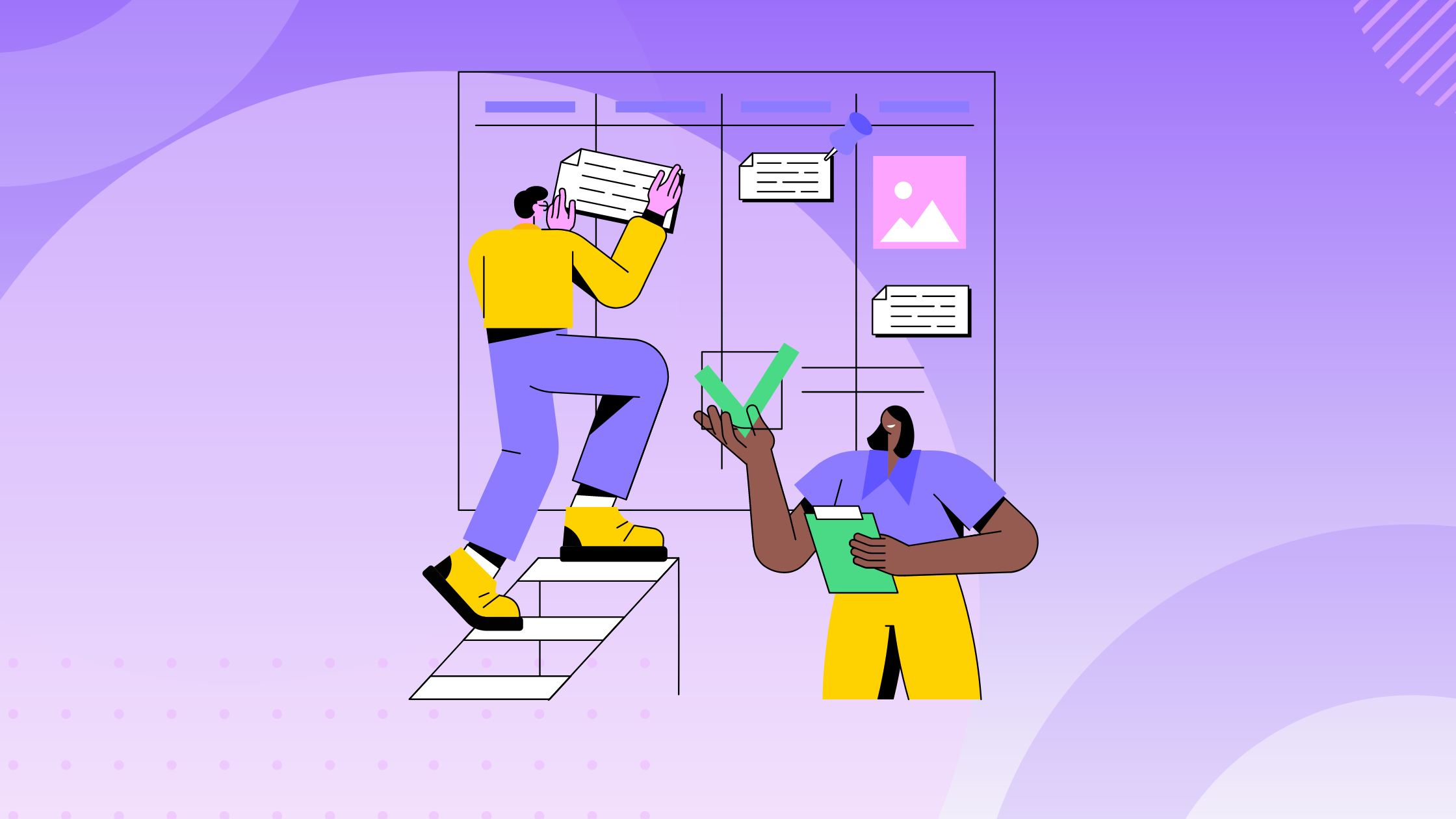Introducing customers to your software or service and guiding them through a personalized onboarding journey improves satisfaction and long-term loyalty. Research shows that customers are 50% more likely to remain loyal to a company with an effective onboarding process, while difficulties during onboarding drive 74% of people away from a business. Here are six ways to create a successful customer onboarding experience of your own.
1. Get to Know Your Customers
Understanding your customer base and what they want from your product can make onboarding more effective, so be sure to collect data about customer needs and pain points at different touchpoints. This starts way before they even become a customer. From marketing to sales, your teams can work together cross-functionally to document each customer’s story, recording what is most important to them and the specific problems your software or service will solve for their business. For example, you should be prepared with which product features your new customer will get the most value from and customize their onboarding project with modules that specifically introduce best practices for implementing those features.
The latest analytical tools will provide accurate insights into your customer base so you can understand them on a deeper level. Choose a few key performance indicators (KPIs) to track, such as engagement rate and completion rate, to engage with customers more successfully during the onboarding process. You can also use surveys and questionnaires to help your team learn more.
Another way to better understand customers is by creating personas, or fictional representations of your audience. As a result, your customer success team will discover more about the type of people you are trying to target during onboarding. You can also tailor materials and processes to meet specific customer needs, such as learning how to use a particular feature.
2. Streamline Onboarding
New client onboarding can take anywhere from a few days to a few months and involves multiple steps, such as product orientation, account setup, and user training. Simplify these processes by mapping out the entire customer journey, from the moment someone purchases your product all the way to post-onboarding. This will let you identify and then eliminate bottlenecks that might prevent a successful implementation of your product. You can also get rid of any unnecessary onboarding steps that could frustrate customers and slow down implementation.
The latest technology, including automation tools, will streamline onboarding workflows and remove repetitive tasks for your customer success team and account managers. For example, the right tools can automatically collect information from customers during the registration process, allowing team members to focus on other tasks.
3. Personalize the Onboarding Journey
Personalization results in better customer outcomes and drives performance. So customize onboarding paths for every one of your product users. That might involve using data from your customer relationship management (CRM) system or other customer success tools to create personalized modules and playbacks for specific audience segments. Alternatively, you can tailor instructional materials and other documents based on customer personas and profiles. Doing so can make customers feel more valued.
Personalized interactions, documents, and experiences will result in a more successful onboarding experience for customers. Many companies use the same processes for customer implementation, so customizing the way you communicate with new users can demonstrate that you care about their business.
4. Communicate Clearly With Customers
As people acquaint themselves with your offerings, communication is critical. Regular interactions with customers will help them learn how to use your product and get more value from it. For instance, you might want to check in on users after they complete online tutorials and walkthroughs and ensure they fully understand how to use a specific feature or function.
Set transparent expectations from the moment you start onboarding customers, preferably after they sign up for your product. Users should know what the onboarding process will involve, how long it takes, and what they can do if they experience any problems. Providing clear instructions and ongoing guidance through this process will also improve the success of your onboarding endeavors. Users should be able to access various customer service and customer onboarding solutions if they have any issues, including phone, email, and live chat support.
5. Empower and Educate Your Customers
Onboarding can be a daunting experience for some customers, especially if they have never used a product like yours before. Learning how to use a complicated software tool, for example, will involve multiple steps and require extensive training. However, empowering customers to take ownership of the onboarding process can make them feel like they are in control, making complex tasks seem a lot easier.
A customer-facing portal is one way to empower users. They can complete tasks and gain knowledge of your products through this customer onboarding software without having to constantly check in with your team. Offering educational content for various onboarding stages will also make it easier for users to access the information they need.
Empowered customers are more likely to be engaged and loyal, which can result in higher retention rates for your company.
6. Ask for and Respond to Feedback
The more complicated your onboarding process, the more questions users will have. Implementing feedback mechanisms at various stages of this process provides customers with ample opportunities to share any concerns about your product. For example, you can ask users to provide feedback after they complete a tutorial. The responses will help you understand whether customers have acquired the skills necessary to use your product effectively.
Make sure to respond to any feedback promptly. If a customer has a query about a product feature, for instance, provide them with the information they need in a reasonable timeframe. This can improve customer loyalty and increase the chances of people doing business with your company again. You can also iterate different onboarding processes based on the information from users. If multiple users struggle to complete a particular task, you might want to create more effective documentation to guide them through that part of the process.
Takeaway
A positive customer onboarding experience can improve satisfaction and loyalty. Get to know your customers, streamline onboarding, communicate clearly with users, personalize journeys, and ask for and respond to feedback. You can also empower users with a customer-facing portal like the one offered by OnRamp, which allows individuals to complete onboarding tasks themselves. That can reduce workloads for your team members and help you create a customer-centric approach for sustained success.
Looking for the best client onboarding software? Get started with OnRamp now.



